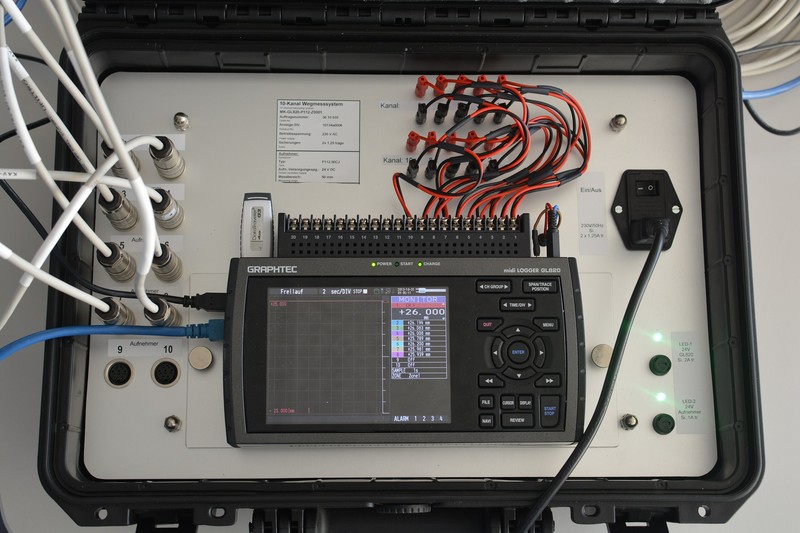Displacments play a role in all civil engineering structures. As long as the structures cannot move freely, these constraints, stress and strainsare created, which is why these have to be limited for most structures.
A displacement sensor measures the distance between an object and its reference point. This allows the length changes to be determined over a defined period of time. The distance changes are registered via voltage fluctuations and transmitted in the form of a standard signal to the data logger , which further processes the input data.









